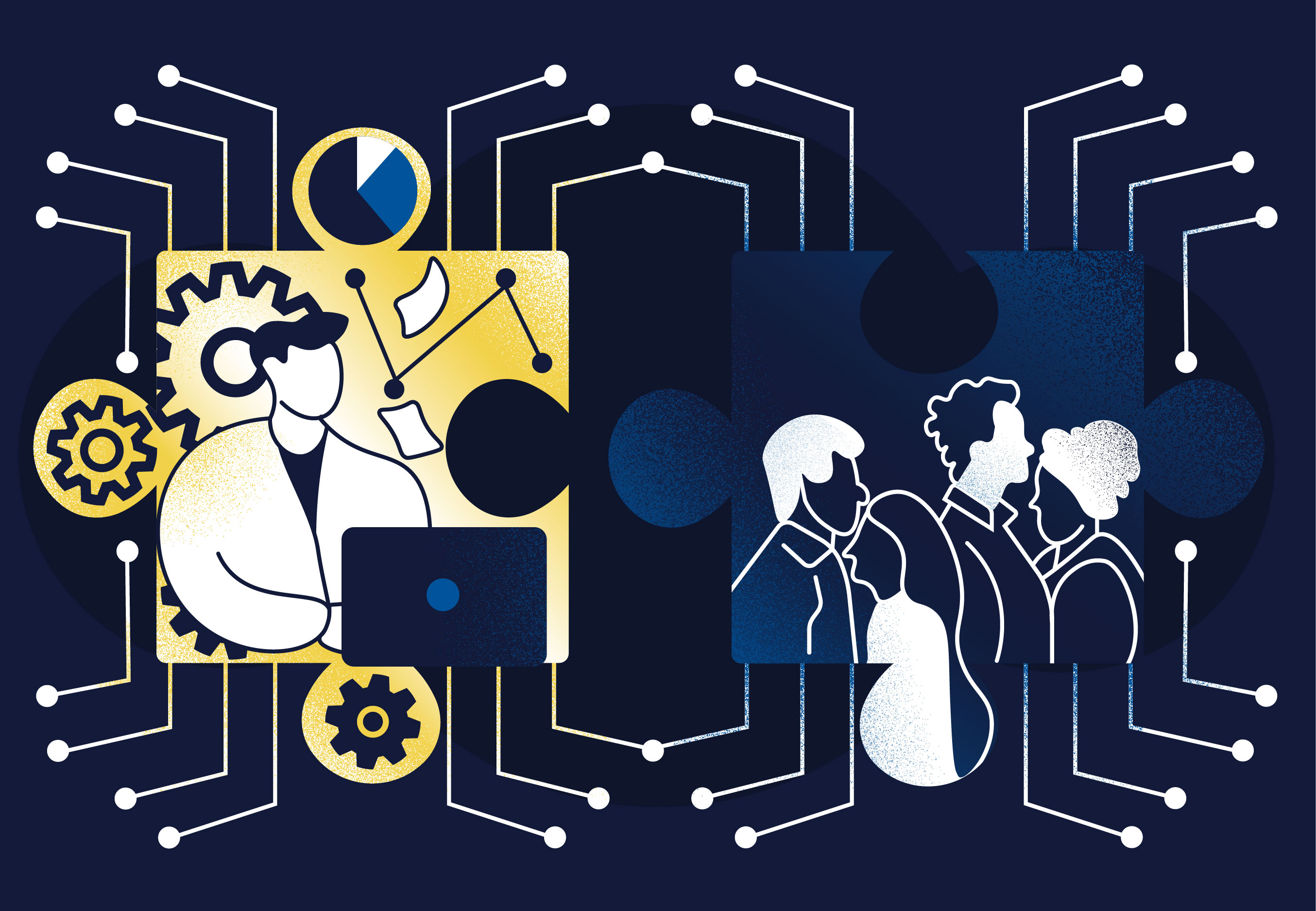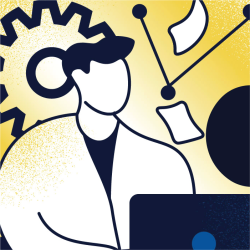Empathy and Expertise: How TEA Solves Problems by Putting People First

All the technical knowledge in the world is useless if you can’t walk a mile in your customer’s shoes.
According to Andrés Colón, Senior Technical Analyst & Product Management Specialist, “It’s about having expertise but also empathy. When people trust that you know your stuff and you can help them, that builds momentum.”
Colon, who joined the Division of Technical Engineering and Architecture (TEA) at the Office of Information Technology (OIT) after completing a CMS Fellowship, has learned this lesson through 15 years of public service. He previously worked in the U.S. Digital Service, a program instituted by the White House in 2014 to recruit talent to address pressing technological challenges in the federal government and modernize IT systems. Colon caught the eye of the White House when, as Puerto Rico’s Director of Government Technology, he wrote the code for a comprehensive background check system.
Colon compares TEA to his time working in Puerto Rico, where a “scrappy” attitude compensated for limited resources. Implementing Lean and Agile methodologies, TEA, currently consisting of 10 members, is a consulting service within OIT. Instead of building their own products or services, the members of TEA help teams across CMS to solve problems, pilot new systems, and bolster their capabilities.
TEA Director Jennifer Mooney goes on to explain, “It’s like that saying about giving a man a fish. We don’t want to just give them fish, we want to teach our colleagues how to fish. Our goal is to provide them with skill sets that will help them solve problems and more quickly elevate their products and services, as well as their careers.”
When TEA consultants engage with teams across CMS, they may have a technical challenge to address, but they are equally focused on teaching and mentoring, identifying gaps that can be addressed, and leaving teams in a position to more confidently - and successfully - achieve their future goals.
One major initiative spearheaded by Mooney’s division is the Workforce Resilience Program (WR). Designed to enhance the technical capacity of CMS OIT staff, the program offers five learning tracks with plans to increase to nine in 2022. The initial tracks are: Human-Centered Design, Product Management, Cloud, Cybersecurity, and Data Science.
Via a combination of self-led e-learning courses, instructor-led seminars, and apprenticeship immersion, participants can choose the depth of their training in any one path. They can increase their general knowledge (awareness), learn specific skills (competence), or become subject matter experts (engagement). Information about the program and the application process are available at the Workforce Resilience Confluence site.
WR is one of several pilot programs that TEA will hand off once the proof-of-concept has been confirmed. The eventual home of WR will be the Office of Human Capital, where most agency-wide training is handled.
Mooney explains that TEA is focused on proving technologies or processes that can assist folks across CMS. Another example is an “AI Playbook” that shares key design principles, best practices, and step-by-step instructions for designing AI solutions and applying AI to the CMS mission.
“I consider myself a servant leader where I will do whatever I can to help people — remove roadblocks, find funding, talk through ideas,” says Mooney, who has been with CMS since 2005, when she started out as a project manager.
In that vein, TEA is available to anyone interested in their consulting services. “They can literally reach out to me and tell me what their needs are,” says Mooney.
An initial conversation is followed by a roughly two-week-long “discovery sprint” to identify problem-solving objectives. Then TEA will produce a short engagement agreement that includes a brief description of the project, a timeline, expectations, and exit criteria. TEA’s interventions are meant to be tactical and temporary.
Those interventions are devised by a team of professionals with diverse backgrounds. While some TEA members have spent much of their career in government, others, like Product Manager Jason Corning, joined CMS from the private sector.
“What I find fascinating,” says Corning, who previously worked at Amazon, “is that the problems we are solving are huge, and they have a large impact. That is exciting because now we can create products that deliver solutions, and, because we are not prioritizing the profits of shareholders, we can see the impacts of those solutions immediately.”
On the flip side, one of the challenges of working in government is navigating the large number of stakeholders and decision makers. “That’s why it’s always important to keep the customer in mind,” Corning says.
To help him maintain his bearings, Corning constantly asks, “What is our end goal? Who are we serving?”
One of his projects, Operational Data & Analytics, is creating a system that combines and visually presents data to help management make critical decisions more efficiently. The system aggregates financial data, contractor data, and security data.
“Technology serves human needs, so we take a Human-Centered Design approach,” explains Corning. Human-Centered Design (HCD) focuses on customers’ needs, constraints, behaviors, and desires. To understand all of that, product managers like Corning implement methods that include surveys, interviews, direct observation, focus groups, and web-based collaboration software such as Mural.
One of the two HCD Specialists on staff at TEA is Kayenda Johnson. While studying for her doctorate in Industrial and Systems Engineering, Johnson specialized in human-computer interaction.
“My training has to do with understanding what the capabilities and limitations of human beings are as it relates to work,” Johnson says. “What do people do very well in certain spaces? What don’t they do well?”
The HCD process, according to Johnson, includes four steps — research, concept design, evaluation, and implementation. When she is embedded in a team, she usually focuses on one or two of those phases.
A recent example is her work on the 1135 waiver process. Under Section 1135 of the Social Security Act, the Department of Health and Human Services can waive or modify requirements that healthcare providers must normally meet to be reimbursed for their services to beneficiaries.
The coronavirus pandemic sharply increased the number of applications for such waivers. Until recently, waiver applications were submitted via email, which proved to be cumbersome for CMS staff and applicants.
Johnson collaborated with the Center for Clinical Standards and Quality to design an automated system for processing waivers. Doing so required the answers to several questions, such as: What information is needed? Which policies do waiver requests address? Who manages those policies? What is the workflow involved?
The research phase for this project included facilitated group meetings as well as the creation of swim lane diagrams and high-level blueprints. The design concept was presented as a wireframe, and the final product is a live website where providers can efficiently apply for emergency waivers.
Another TEA endeavor is called RapidATO. It applies machine learning to understand best practices in compliance documentation across CMS’s 162 information systems. The goal is to create a library of compliance language that can be shared amongst the users of all those systems. By simultaneously opening up data silos and leveraging AI methodologies, CMS can expedite compliance authorizations. Doing so enables the agency to distribute resources to healthcare providers more quickly and thus literally save lives.
At the end of the day, TEA measures its success not just in developing successful products but in developing more successful people. As Colon puts it, “We want to influence the culture at CMS to bring the customer’s perspective, be willing to move fast, be more experimental, and not be afraid of failure.”

